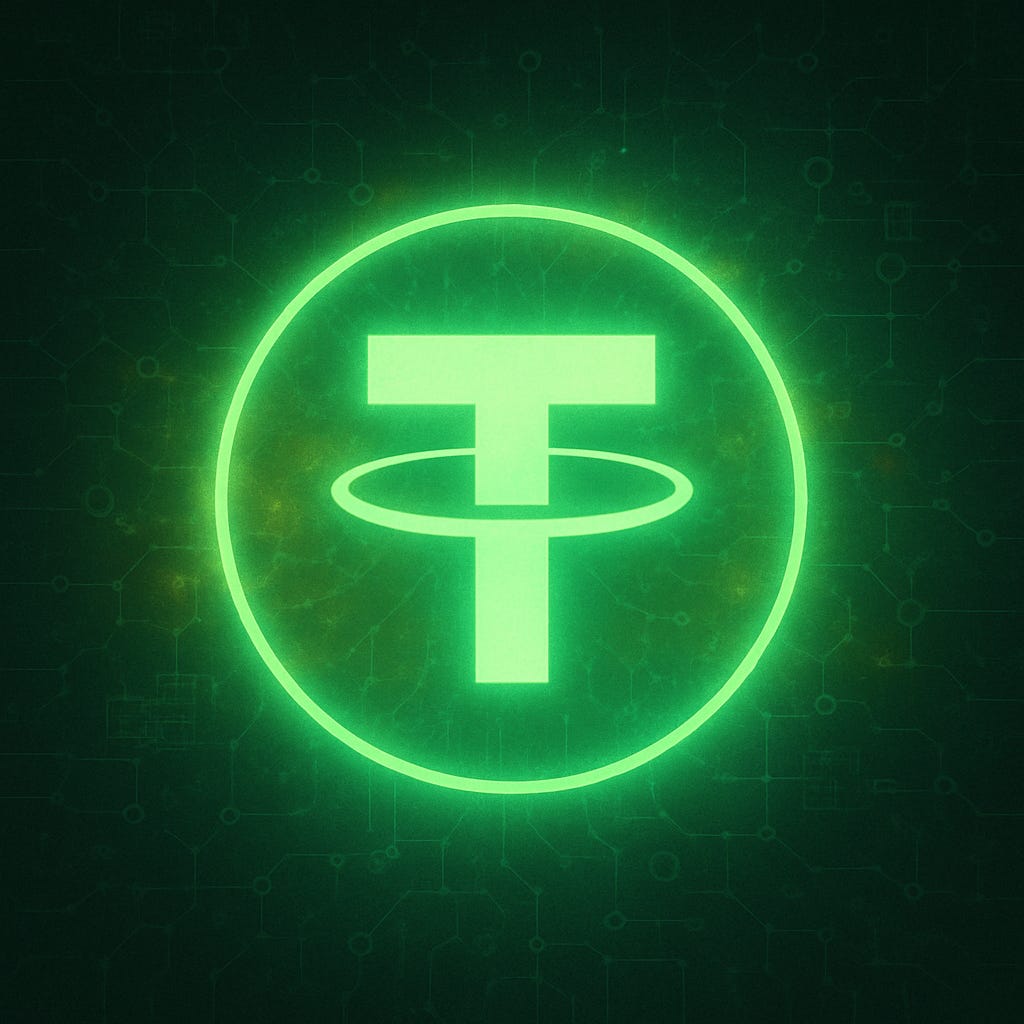Building Blocks – Tether’s Role in the Global Gray Zone
What you need to know about the role of Tether (USDT) in global illicit finance
Building Blocks is a series of short, accessible explainers that break down the core concepts underpinning my broader research. Whether the focus is military technology, illicit finance, terrorism, or whatever else I’m onto, each post offers a clear foundation for understanding the systems, strategies, and power structures shaping today’s conflicts and global dynamics. These pieces are designed to inform, not overwhelm—one concept at a time.
Tether (USDT) is what’s known as a stablecoin—a type of cryptocurrency that’s designed to maintain a 1:1 value with traditional money – in this case, the US dollar. The idea is simple: you get the speed and flexibility of crypto, without the wild price fluctuations of Bitcoin or Ethereum. That makes it incredibly useful for traders, businesses, and increasingly, criminals.
Launched in 2014, Tether’s founders created the coin as a stable means to conduct transactions on the blockchain. But today, it’s taken on a very different role. On the frontlines of global illicit finance, Tether has become a go-to tool for laundering billions. Whether it’s Iran-backed proxies in the Middle East or scam syndicates in Southeast Asia, USDT is the new cash for people and entities barred from traditional financial systems. In essence, it’s the SWIFT banking system for the criminal underground.
Unlike traditional dollars, USDT can move across borders and regions in seconds, through anonymous wallets, with minimal regulation. That makes it especially attractive to actors operating in gray zones: sanctioned regimes, criminal networks, cyber gangs, and rogue financial hubs.
What Makes Tether So Useful to Criminals?
Stability without scrutiny: USDT pegs to the dollar but avoids traditional banking compliance.
Frictionless movement: Instant global transfers via Tron or Ethereum (increasingly TRON)—no bank accounts, no questions, at least in jurisdictions with low know-your-customer (KYC) requirements.
Weak oversight: Loophole-laden over-the-counter (OTC) markets and lightly regulated exchanges offer direct access to fiat.
The Houthi Case Study
As detailed in my recent GNET report, the Houthis have moved hundreds of millions through an informal network of traders, shell companies, and other shady entities. Increasingly, these conduct their transactions in Tether. It’s faster than hawala and harder to trace – ideal for purchasing things like Chinese-made drone components or moving foreign cash around the world once its exchanged to crypto.
China’s Digital Gray Zone in Southeast Asia
In parts of Myanmar, Laos, and Cambodia, and other countries, Chinese-led scam compounds employ trafficked workers to extract funds from victims across the world. USDT plays a central role in these operations:
It moves profits to and from China-based shadow banking entities
Fuels underground casinos and black market supply chains
Links these operations to Hong Kong-based OTC desks, often laundering via Tether-Tron for its speed and low fees
In one example, a single wallet cluster linked to a Bangkok-based Chinese business man received over $90 million in USDT in just four months.
Exploitation Meets Enforcement: Tether Fights for its Reputation
What connects a Houthi drone shipment, a Cambodian scam ring, and a Russian ransomware payout? Increasingly, it’s USDT. As illicit finance globalizes, actors are learning from one another—and leveraging the same tools. However, all is not lost as Tether has increasingly moved to stem illegal use of its stablecoin.
In a notable instance, Tether assisted the Department of Justice in seizing nearly $9 million in USDT linked to a cyber scam organization that defrauded over 70 victims through romance and cryptocurrency confidence schemes, commonly known as “pig butchering” scams. Tether’s cooperation included freezing the illicit funds, thereby facilitating their recovery and underscoring the company’s commitment to upholding integrity within the cryptocurrency ecosystem. Tether has also partnered with blockchain analytics firm Chainalysis to implement a comprehensive monitoring system for USDT transactions, aiming to detect and prevent illicit activities such as sanctions evasion and terrorist financing. This collaboration enhances Tether’s compliance measures by providing tools like sanctions monitoring, categorization of USDT holders, and detection of illicit transfers, thereby reinforcing the integrity of its ecosystem.
Tracing the Digital Underground
As Tether scrambles to contain misuse, the networks exploiting its speed and liquidity continue to evolve. Understanding this intersection of stablecoins, state actors, and organized crime isn’t optional—it’s essential. As I incorporate more of my research on illicit finance, this free short piece and others to come will help you better understand the core concepts behind them.



